Spring in Chicago just hits differently.
After our long, cold winters, the appearance of certain produce on menus — harbingers of spring like asparagus, ramps, garlic scapes, fiddleheads, and rhubarb — are cause for celebration in every professional kitchen. But the reality of living in planting Zone 5 and the variability of local spring weather, pinballing between warm spring rains and bone-chilling winds, balmy temps in the 70s and clumps of snowflakes falling on hard-working crocuses and snowdrops, can make menu planning a challenge, both for the farmers themselves and chefs that have forged their reputations on farm-to-table, seasonal cuisine.
“Green City Market’s decision to open its outdoor season on April 2 — a month earlier than usual — could signal a major redefinition of ‘growing season’ in the Chicago region,” says Bob Benenson, publisher/writer of the Local Food Forum newsletter. “With global climate change one likely factor, there is a new normal in which the earliest crops to market, such as ramps and asparagus, have become regularly available in April. Add to that the growing number of farmers growing in hoop houses and other indoor structures, and the idea of starting the season while it’s still cold out doesn’t seem so exotic.”
This is great news for local farmers and other food purveyors who need farmer’s market sales to help boost their bottom line — and for their customers, who have grown weary of winter squash and Brussels sprouts after months of their dutiful consumption. Of course, the pandemic has cast its long shadow across the supply chain, both providers and consumers. “This season we’ll be watching for the long-term impact of the pandemic on the relationships between farmers and chefs,” says Benenson. “Before COVID, some farms sold half or more of their output to restaurants. The shutdowns two years ago first caused widespread panic, but farmers then shifted to selling more direct-to-consumers. Restaurants are back, but farmers who diversified may be wary of putting as many eggs in the chefs’ baskets as they used to.”
We’ve checked in with six award-winning local chefs, boosters of local farms and sustainable practices all, who share their thoughts on spring cuisine, the importance of seasonality, and give us a glimpse of what the long-awaited appearance of spring produce means to their menus.
Sarah Stegner, Prairie Grass Café
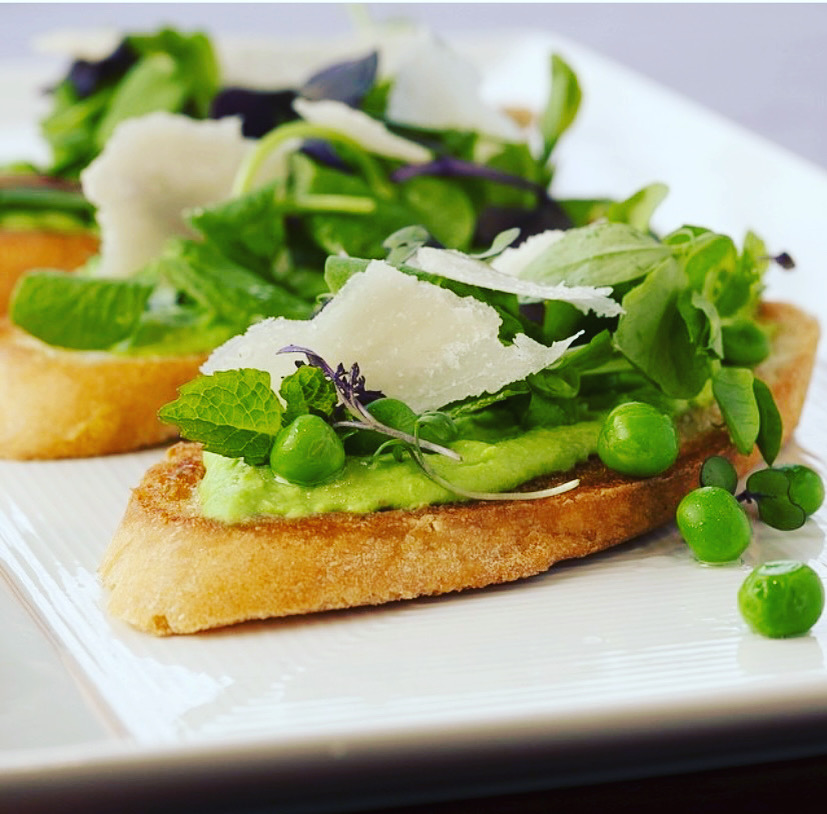
Seasonality is the ultimate inspiration for two-time James Beard Award-winner Sarah Stegner of Northbrook’s Prairie Grass Café, one of the founders of Green City Market. “It’s what I see and taste at the Green City Market, or what the farmers bring to me directly from spaces sometimes only a few miles away,” she shares. “Cooking and celebrating what is at the peak of its flavor is a chef’s best friend.”
Stegner works closely with Tracey Vowell of Kankakee’s Three Sisters Garden, Klug Farm, Nichols Farm & Orchard, and Adam’s Acres among many others. Soil & Soul, a therapeutic farm run by Thea Nolan and very close to the restaurant, is another favorite source.
Favorite spring ingredient? “Wild ramps! But I also love watercress, radishes, the first rhubarb, and peas!”
Her pick of the spring menu: “This Pea Bruschetta represents spring to me. The peas are from Klug Farm, mint from our garden at Prairie Grass Café, and pea shoots and microgreens from Three Sisters Garden, plus some freshly shaved Parmesan. Simple and delicious; easy to eat.”
Rick Bayless, Frontera Grill, Topolobampo, XOCO, Bar Sótano, et al.
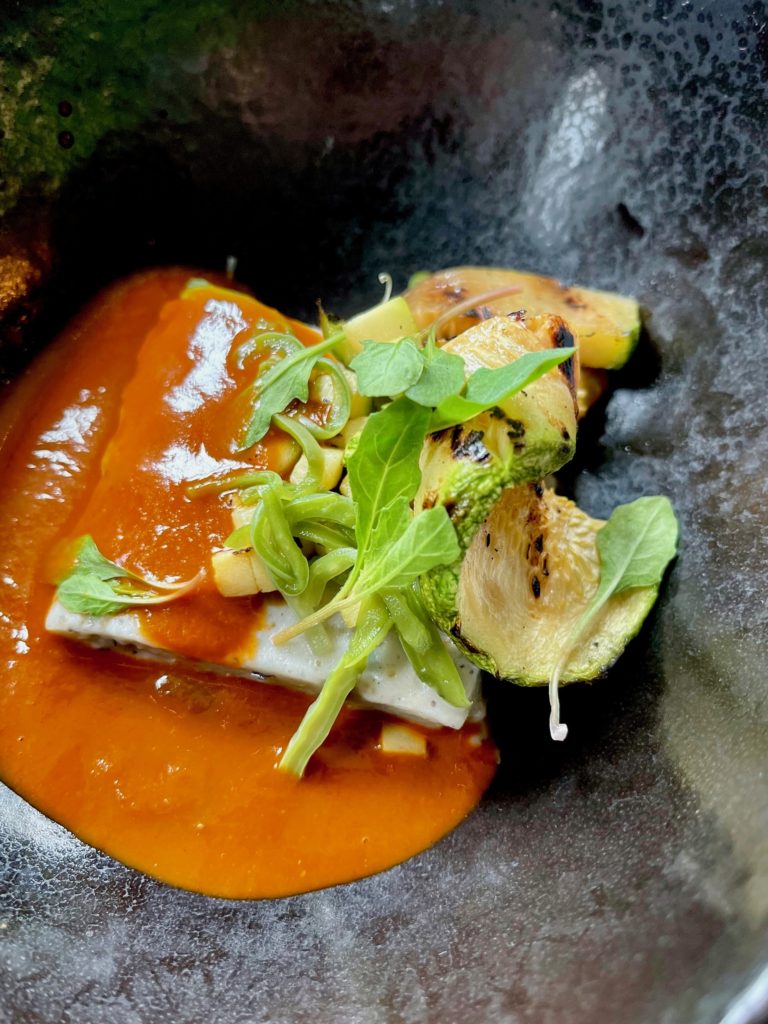
Rick Bayless is one of Chicago’s most decorated, nationally known chefs — multiple James Beard Awards, Michelin recognition, Top Chef Masters, and more — but has long championed local, sustainable foodstuffs, establishing the Frontera Farmer Foundation back in 2003 to provide small, sustainable farms with capital development grants. They have given away nearly three million dollars to date. Of the pandemic’s effect on the relationship between farmer and consumer, Bayless says, “A funny thing happened in the early days of the pandemic. When people saw empty shelves at their supermarkets, they turned to local supply chains (farmers’ markets, bakeries, butcher shops, etc.) and that turned out to be a blessing in disguise. So, the focus now is keeping that momentum going, and the absolute best way to support farms is to buy directly from them at farmer’s markets, and on-farm stores or participating in community supported agriculture (CSA) programs.”
He sees the early opening of Chicago’s Green City Market as a real boon for local farmers. “In addition to simply getting people excited about local food, the opening of the market serves as a chance for farmers to offer produce grown in hoop houses and greenhouses. In fact, that’s one of the reasons we started our Frontera Farmer Foundation. Originally, our foundation grants served as a way for Midwest farmers to equip their farms with structures to extend their growing seasons. Now, here in these early days of the market season, we’re seeing the results of those investments.”
Favorite spring ingredient? “Although I think I’m duty-bound to say ‘ramps,’ right now I’m going to say fiddlehead ferns.”
His pick of the spring menu: “We have this amazing Tamal Colado on the menu at Topolobampo featuring ramps. Our version is a polenta-style tamal with duck egg, black beans & amaranth, with a sauce and from heirloom beans and guajillo chiles, charred tatume squash, ramps and herby epazote. The full spring bounty might be a little way away, but that pungent, garlicky punch from ramps hints at what’s around the corner.”
Jonathon Sawyer, Adorn
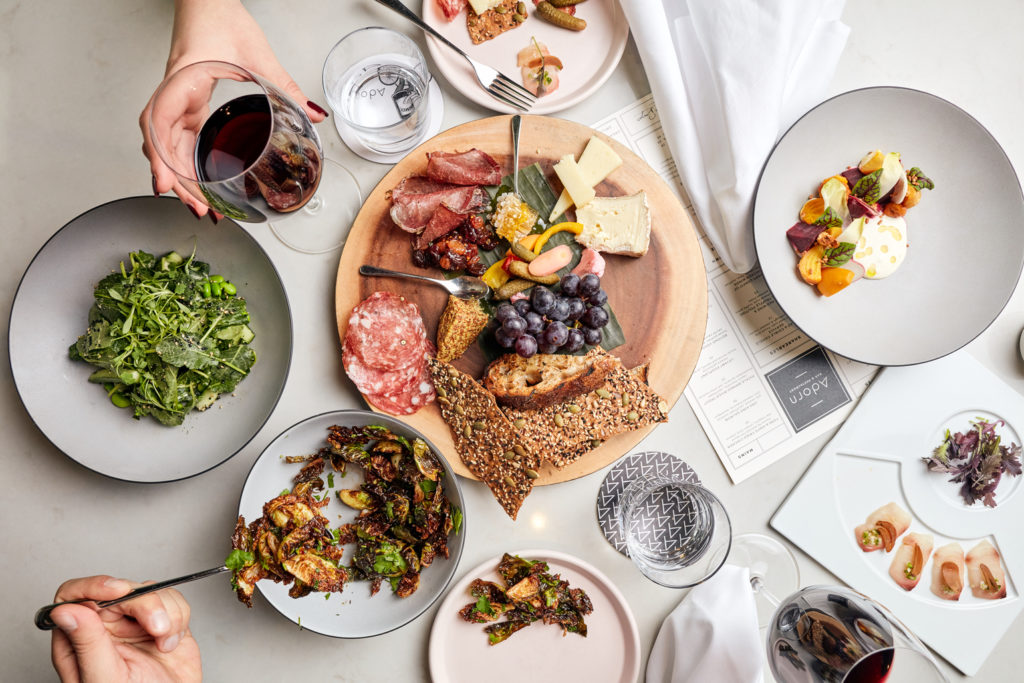
Adorn’s chef Jonathon Sawyer, a James Beard Award winner from Cleveland, just celebrated one year at his new restaurant in Chicago’s Four Seasons Hotel. He believes strongly in keeping it local, with 70% of their food in season originating within a 200-mile radius. Sawyer is also serious about zero waste. “I didn’t grow up with means and used everything our garden grew, or we purchased from the market,” says Sawyer. His mothers and grandmothers were his inspiration for frugality in his restaurant kitchen, where they do their own butchery and use the bones and vegetable scraps for stock, bread heels for breadcrumbs, etc.
The seasons motivate Sawyer to create while honoring the produce itself. “I love what is going out of season, and what is coming into season, celebrating an ingredient as you say goodbye to it for the year,” says Sawyer. “Some of the best tomatoes I’ve ever tasted come in October and contrarily [often] the best English peas are the first of the season.” He repeatedly turns to Cedar Ridge Farm for eggs, Jenny’s Mill for grains, and Marcoot Jersey Creamery for cheeses to complement local produce.
Favorite spring ingredient? “I love to see fiddleheads and ramps in the wild as a harbinger for the beginning of the season. I look forward to eating fava flowers, garlic scapes and green garlic, morels and black trumpets, and wild fraise des bois (petite French strawberries).”
His pick of the spring menu: “Our kale and gomae salad. Sometimes, the most interesting dish is seemingly boring — in this case, a salad. The texture of fine kale and spinach is contrasted by crunchy cucumbers and edamame, crispy wakame seaweed and wasabi peas, and soft, unctuous avocado, all balanced by the aki miso and sesame vinaigrette.”
Debbie Gold, Found Kitchen & Social House
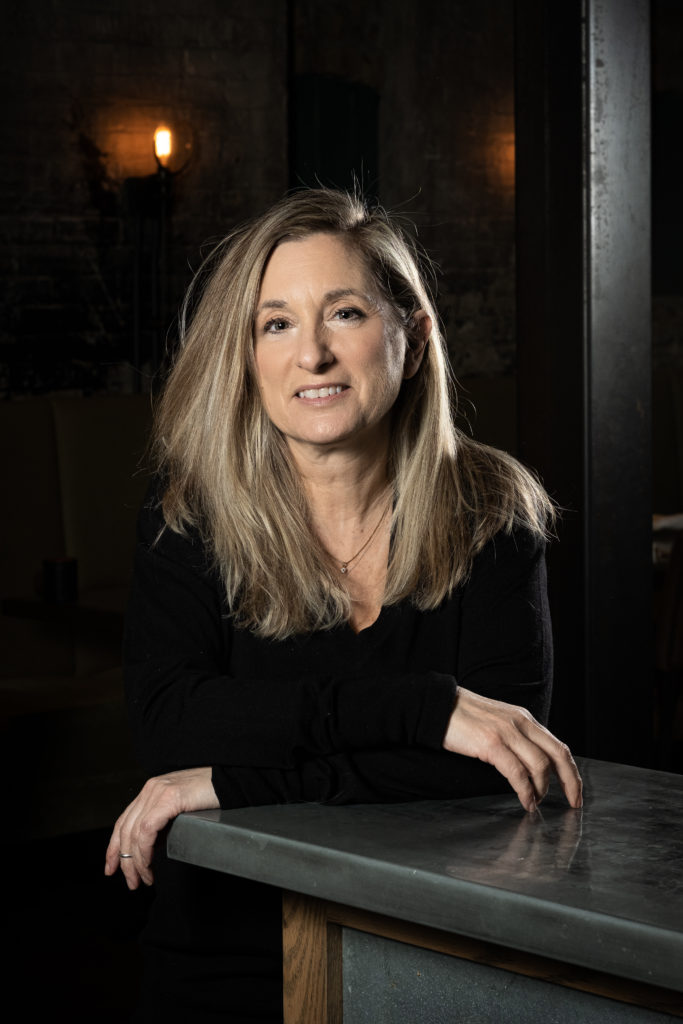
Evanston scored their own James Beard Award winner when chef Debbie Gold joined forces with formidable restaurateur Amy Morton a few years ago. Gold has always been committed to buying locally in season. “Foods in season always taste better,” says Gold. “To work with product in season means to have the very best flavor of that item, which in turn means the food on my menu can only taste that much better. I believe it is also important to support the local business in your community, and that is why I look to buy from local farmers and producers, if possible. The produce is harvested closer to the point of ripeness and/or cared for with more TLC. Buying locally also cuts down on transportation costs and carbon emissions.”
For many years, Gold has been building her plates around vegetables, often working in a protein, but sometimes not. She also works toward zero-waste cooking. “I am French trained — I worked in French kitchens before starting my career in the U.S. — and I learned you do not throw anything away,” she reminds us. “There is always something you can do with the ‘waste’ of a product.” For example, Found Kitchen buys sustainably raised, whole salmon, cuts the meat into fillets, then uses the scraps for salmon rillettes or cured belly; the bones become fish stock.
Favorite spring ingredient? “The last couple of years, I always anticipate the arrival of ramps. Maybe it’s because they are a sign to me that spring has officially arrived. They have a distinctive flavor and are very versatile. They can be preserved or fermented, sautéed, or braised. I like to use them in a pesto, in an oil, used in place of scallions, or the greens can be used as a wrap or made into kimchi… and then they’re gone.”
Her pick of the spring menu: “One of my favorite recipes is my ramp soubise. Soubise is traditionally made with onions, so I do more of a spring onion mixture combining onion, spring onions, sometimes leeds, and finish with ramps. I don’t purée all of the soubise but leave it as a wonderfully chunky mixture of creamy spring onions.”
Joe Frillman, Daisies
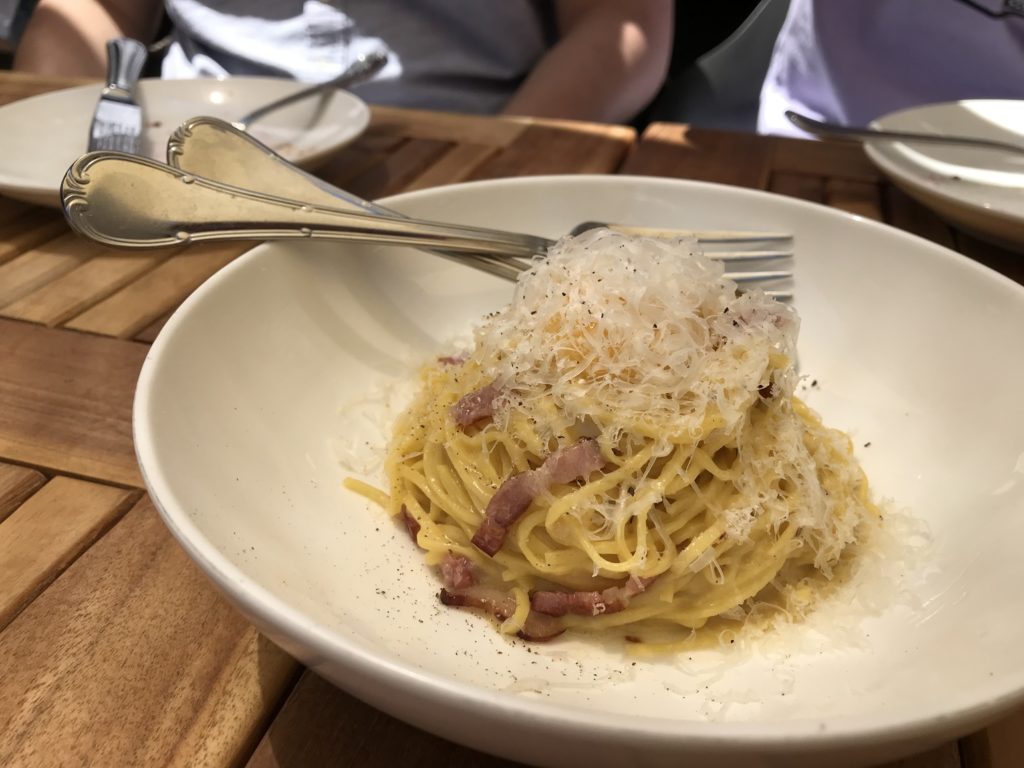
Logan Square favorite Daisies is a Frillman family affair. Joe is the Executive Chef/owner, sister Carrie Frillman’s vegetable-focused artwork adorns the walls, and much of the produce is sourced from his brother Tim Frillman’s Michigan farm. “We work closely with my brother’s operation, Frillman Farms,” shares Frillman. “Our relationship with the local and sustainable business is as directly farm-to-table as it gets. To showcase this amazing resource that we have, we focus many of our dishes around the produce as the center of the plate.”
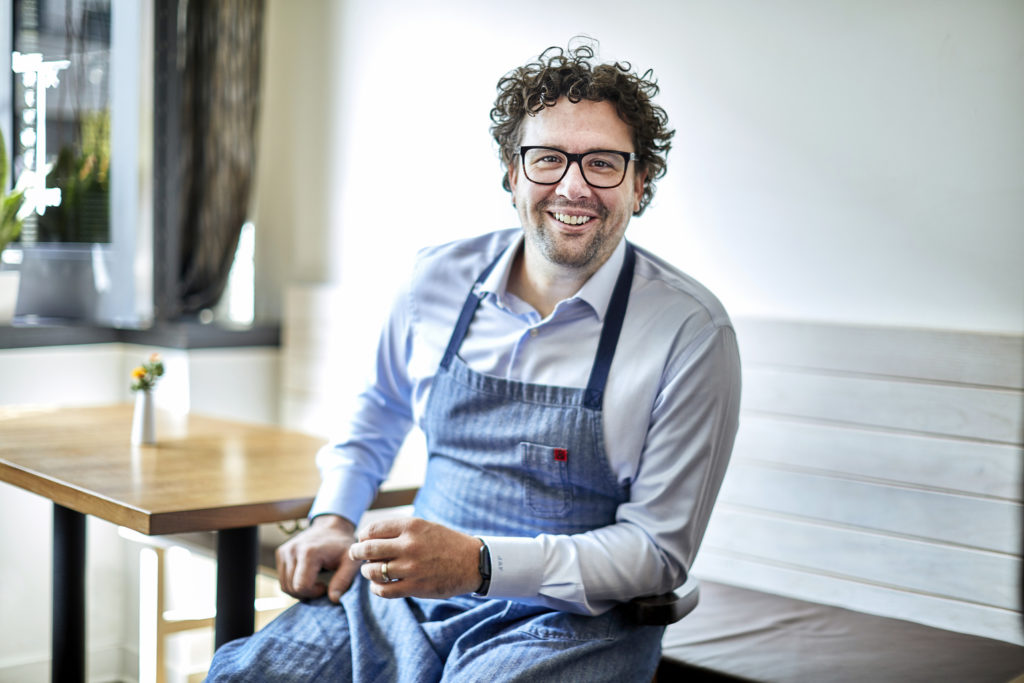
Pastas at Daisies are all made in-house, and Frillman sources some of his pasta flour from Midwestern farms, combining it with local organic eggs to create carb-filled magic. But they also have, as Frillman puts it, “an extensive fermentation program which extend the life cycle of our produce and capitalizes on products that would otherwise be discarded. We lead with a ‘trash cooking’ approach, meaning we take scraps and peels, as well as save overgrown or starting-to-turn produce, to use in our fermentation program. Also, our vegetable-forward theme contributes to our sustainability.” He adds, “Seasonality leads everything we do at Daisies — the menu is ever-shifting because of it.”
Favorite spring ingredient? “Ramps!”
His pick of the spring menu: “Ramp Carbonara. This pasta dish spotlights ramps (tops and pickled) alongside shallots, bacon, raw egg yolk, Sarvecchio cheese and [house-made] Tajarin pasta.”
John Shields and Karen Urie Shields, Smyth + The Loyalist
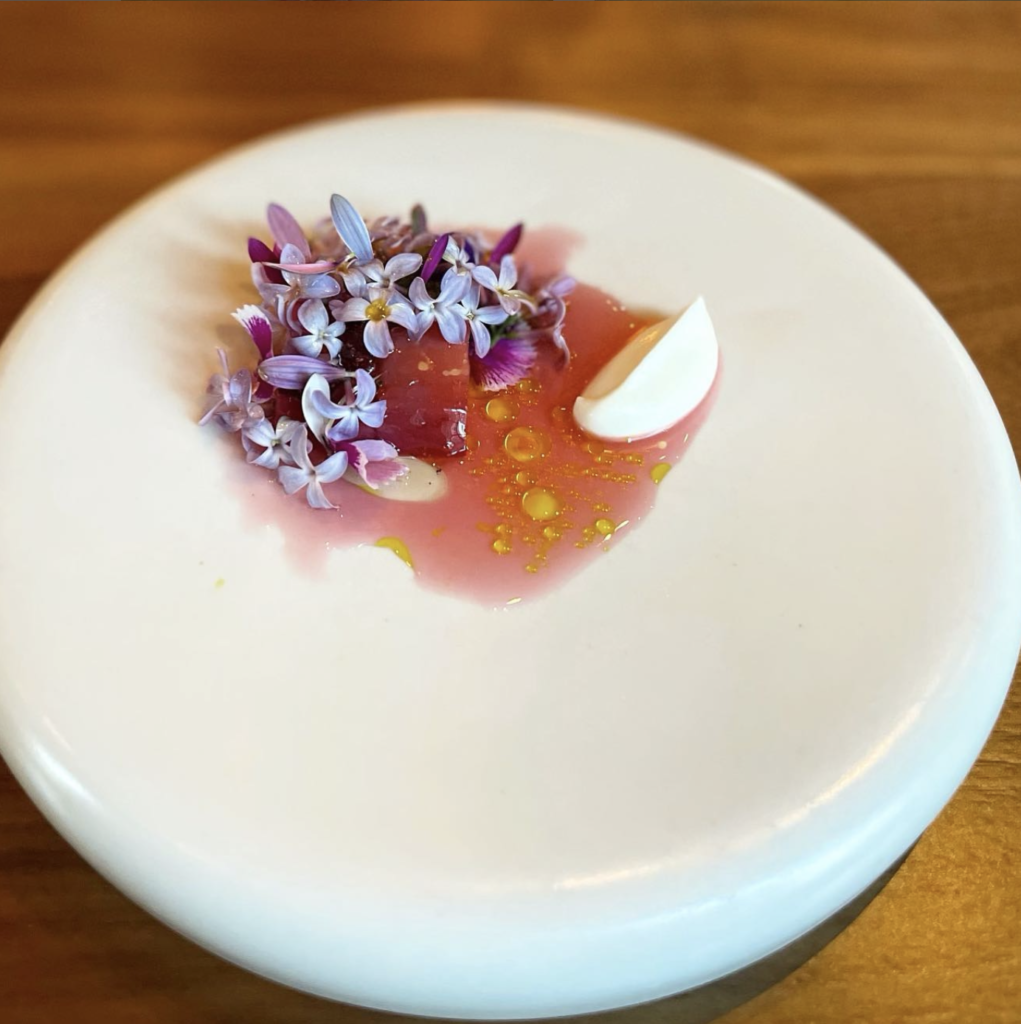
This talented married couple — they met working at Charlie Trotter’s many years ago and now share two daughters AND two restaurants — is up for a James Beard Award for Best Chef – Great Lakes in June this year for their work at the two-Michelin-starred Smyth, their fine-dining West Loop spot with a tasting menu that is out of this world… yet very much rooted in the earth. “Seasonality doesn’t just inspire our cooking, it informs every decision we make on a daily basis,” says John Shields. “We are exploring all our ingredients from head to toe, inside and out. We try to use every element of the ingredients we bring in.”
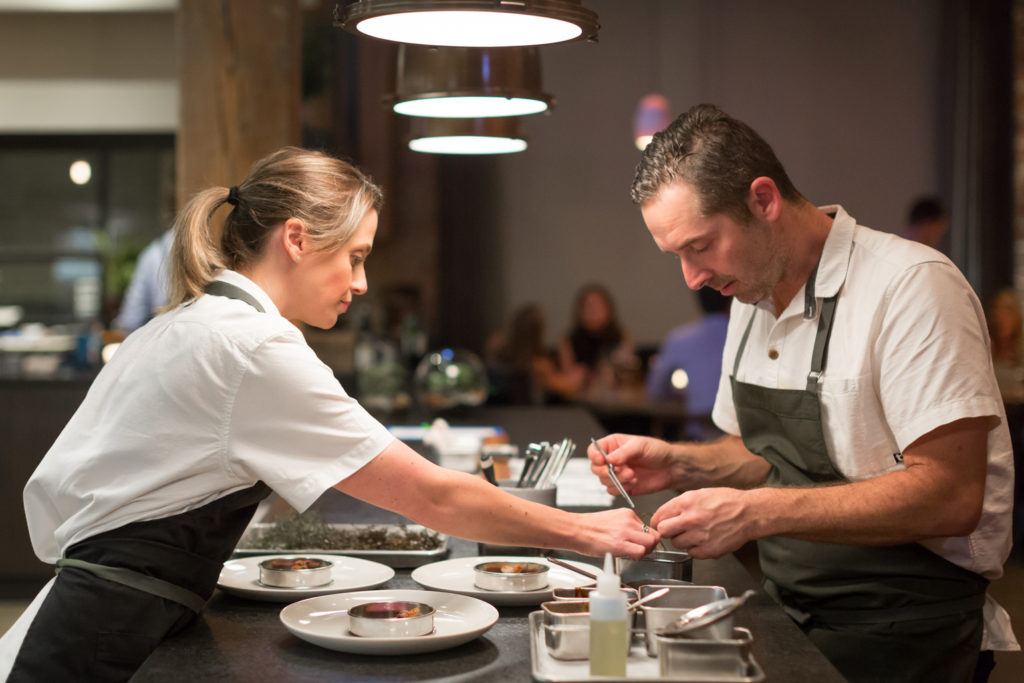
As they share on their website, they are “trying to express ‘farm on a plate’ — not in such a literal sense, but more as an idea. We want to create memories. We want people walking away saying, I’m never going to forget that.” They work to extend the seasons at the heart of their kitchen by pickling and fermenting what they can for later use. Local farms they source from include Froggy Meadows, Seedlings, Spence, Freight to Plate, and Chef’s Local Choice.
Favorite spring ingredient? “Green asparagus and rhubarb!”
Their pick of the spring menu: “Karen’s rhubarb dessert — baked rhubarb with spring onion flowers, dried summer strawberry, toasted black pepper and cultured cream.”
More from Better:
- New in Town: Publican Quality Bread, Upscale Mexican in Highland Park, Sophia Steak in Lake Forest, Mindy Segal’s New Bakery, and More
- Fizz & Pop Organic Soda Shop Mixes It Up in Winnetka
- 30 of the Best Things to do in Chicago and the Suburbs in April 2022

Julie Chernoff, Better’s dining editor since its inception in 2007, graduated from Yale University with a degree in English — which she speaks fluently — and added a professional chef’s degree from the California Culinary Academy. She has worked for Boz Scaggs, Rick Bayless, and Wolfgang Puck (not all at the same time); and counts Northlight Theatre and Les Dames d’Escoffier International as two of her favorite nonprofits. She currently serves on the national board of MAZON: A Jewish Response to Hunger, an advocacy group addressing hunger issues in the U.S. and Israel for the nearly 46 million people — veterans, children, seniors, tribal nations, and more — who go to bed hungry every night.
